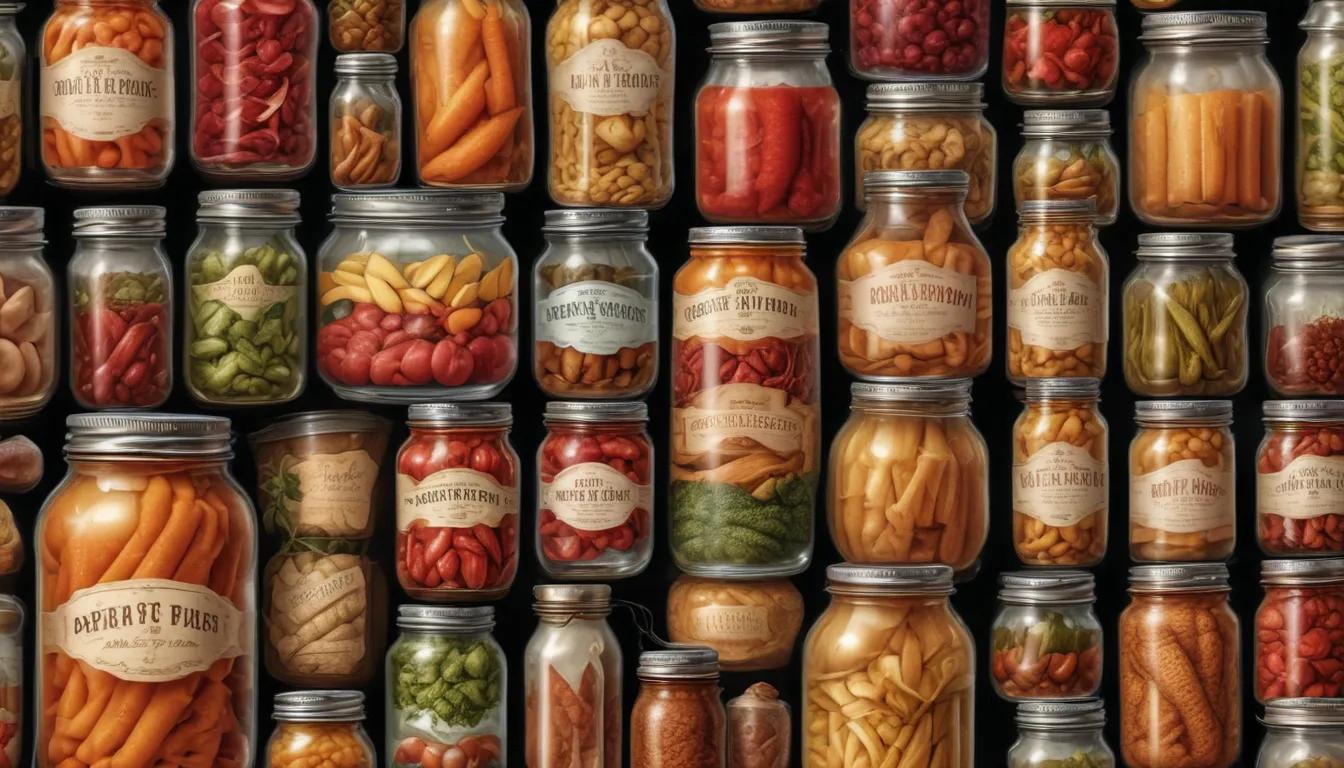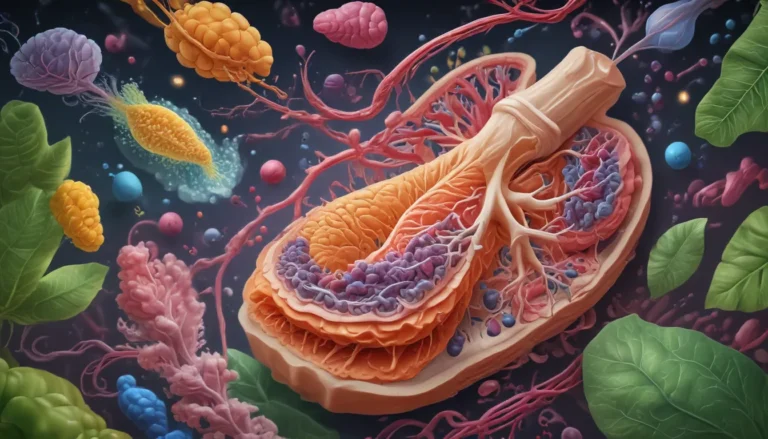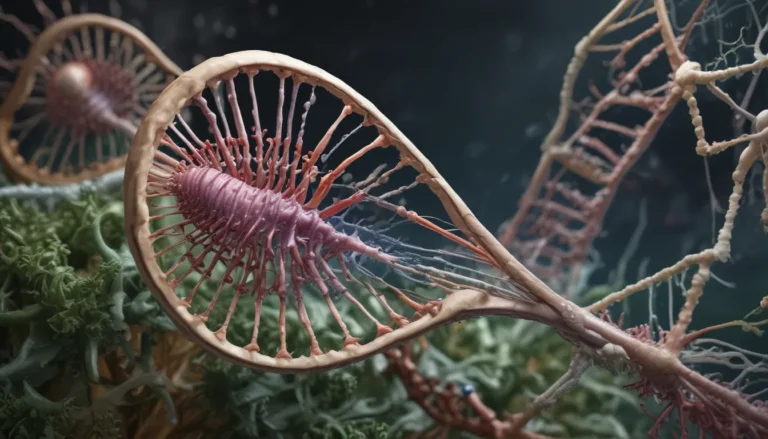A Note About Images: The images used in our articles are for illustration purposes only and may not exactly match the content. They are meant to engage readers, but the text should be relied upon for accurate information.
Food preservation is a timeless practice that has allowed us to savor a wide array of foods year-round. From ancient salting techniques to modern high-pressure processing methods, the evolution of food preservation showcases humanity’s ingenuity in ensuring food safety and longevity. Join us as we delve into 18 fascinating facts about food preservation that shed light on its significance and impact on our lives. Discover the diverse techniques used across different cultures, explore the history of food preservation, and uncover some curious tidbits that will deepen your appreciation for the culinary delights on your plate. So, grab a snack and let’s embark on a journey through the intriguing world of food preservation.
Evolution of Preservation Techniques
- Food preservation has a rich history, spanning centuries and showcasing the ingenuity of humans in keeping food fresh and safe to eat. Different methods like pickling, smoking, and freezing have been instrumental in extending the shelf life of various foods, allowing us to enjoy a diverse range of culinary delights year-round.
Ancient Wisdom: The Power of Salt
- Salt has served as a natural preservative for thousands of years, inhibiting bacterial growth by drawing out moisture from food. This age-old method of food preservation has stood the test of time, ensuring the longevity of perishable items.
The Birth of Canning
- In the early 19th century, Nicolas Appert revolutionized food preservation with the development of canning. This process involves sealing food in airtight containers, paving the way for long-term storage of perishable goods.
Embracing Refrigeration
- The invention of the refrigerator in the late 19th century transformed the landscape of food preservation. By providing a means to store perishable foods, refrigeration significantly extended the shelf life of various food items.
Timeless Tradition: Dehydration
- Dehydration, an ancient form of food preservation, involves removing moisture from food to inhibit bacterial growth. Methods like sun-drying and smoking have been utilized for centuries to preserve fruits, vegetables, and meats.
Pickling: A Time-Honored Technique
- Pickling, a preservation method that relies on fermentation in vinegar or brine, has been a staple in culinary traditions worldwide. This process creates an acidic environment that prevents spoilage and enhances the flavor of foods.
Savory Smoke: A Dual Purpose Technique
- Smoking food not only imparts a distinctive flavor but also aids in preservation by dehydrating the food and inhibiting microbial growth. This time-honored technique has been employed across various cultures to preserve meats and fish.
Chilling Out: The Magic of Freezing
- Freezing food at low temperatures effectively halts bacterial growth and enzymatic activity, preserving the nutritional content and quality of the food for prolonged periods. This method of preservation has become a cornerstone of modern food storage.
The Art of Fermentation
- Fermentation, a natural preservation process involving beneficial bacteria or yeasts, transforms foods like yogurt, sauerkraut, and kimchi. This age-old technique not only enhances flavor but also extends the shelf life of fermented products.
Vacuum Sealing: A Modern Innovation
- Vacuum sealing food eliminates oxygen, preventing oxidation and preserving freshness. This method is commonly used for preserving perishable items like meat and vegetables, ensuring extended shelf life.
Sweet Preservation: The Power of Sugar
- Sugar has long been utilized as a preservative for fruits and jams, creating an inhospitable environment for bacteria, molds, and yeast. By reducing water activity and increasing osmotic pressure, sugar effectively extends the shelf life of various food products.
Modern Marvel: High-Pressure Processing
- High-pressure processing (HPP) is a contemporary technology that extends the shelf life of food without the use of heat or chemical additives. By subjecting food to high pressures, harmful bacteria are eliminated while nutrients are retained.
The Science of Pasteurization
- Developed by Louis Pasteur, pasteurization involves heat-treating liquids like milk and juice to kill harmful bacteria and extend their shelf life. This widely employed method ensures the safety and longevity of liquid products.
Harnessing the Sun: Drying Techniques
- Drying food, a time-tested preservation method, removes water content to inhibit microbial growth. Fruits, vegetables, and herbs are commonly dried to preserve their flavor and nutritional value.
Keeping It Cool: Cold Storage
- Cold storage, encompassing refrigeration and freezing, slows down chemical and microbial processes that lead to food spoilage. This method is essential for preserving perishable items like dairy, meat, and vegetables.
Preserving Quality: Additives in Processed Foods
- Preservatives like antioxidants, antimicrobials, and emulsifiers are commonly added to processed foods to extend shelf life and maintain quality. These additives inhibit bacterial growth and prevent spoilage, ensuring food safety.
Safeguarding Freshness: Controlled Atmosphere Storage
- Controlled atmosphere storage involves modifying the gases around stored food items to reduce respiration and spoilage rates, thereby extending shelf life. This method is instrumental in preserving the freshness of perishable goods.
FAQs: Exploring Common Questions
- Why is food preservation important?
- What are some ancient methods of food preservation?
- How does canning work as a preservation method?
- Is freezing an effective preservation method?
- Can food preservation be done at home?
- What are some modern advancements in food preservation?
Food preservation is a blend of art and science, with a rich tapestry of techniques that ensure the freshness, quality, and safety of our meals. From time-honored traditions to cutting-edge technologies, the journey of food preservation continues to evolve, catering to our nutritional needs and reducing waste.
Unveiling the Secrets: Conclusion
Food preservation is not just a means of ensuring food safety and longevity; it is a gateway to a world of flavors and nutrients waiting to be savored. By delving into the history and science of preservation methods, we gain a deeper appreciation for the role that food preservation plays in our lives. Whether exploring ancient techniques or embracing modern innovations, the art of preserving food offers a rich tapestry of flavors and traditions to explore.
Food preservation has a storied past, a vibrant present, and a promising future, with a myriad of methods and techniques waiting to be discovered. As we unravel the mysteries of food preservation, we unlock the secrets to preserving the essence of our favorite foods for future enjoyment.
Remember to check out our other articles on food preservation techniques, the science behind freezing point depression, and surprising refrigerator facts to further enrich your knowledge and appreciation for the world of food preservation.
Frozen in Time: The Fascinating World of Food Preservation
Food preservation has been a cornerstone of human civilization, allowing us to enjoy a diverse range of culinary delights throughout history. From ancient salting methods to modern preservation technologies, the art of preserving food continues to captivate and inspire. Explore the rich tapestry of preservation methods, uncover the science behind these techniques, and embark on a journey through the captivating world of food preservation. Join us as we unravel the mysteries, traditions, and innovations that shape the way we keep our meals fresh and flavorful.






